Dacia Duster vs Hyundai i30 Wagon – Which one offers the better deal?
Everyday use, family trips or long-distance drives – here’s where the differences show.
Discover whether Dacia Duster or Hyundai i30 Wagon fits your lifestyle better.
Costs and Efficiency: Price and efficiency are often the first things buyers look at. Here it becomes clear which model has the long-term edge – whether at the pump, the plug, or in purchase price.
Dacia Duster has a clearly advantage in terms of price – it starts at 16300 £, while the Hyundai i30 Wagon costs 24800 £. That’s a price difference of around 8571 £.
Fuel consumption also shows a difference: Dacia Duster manages with 5 L and is therefore somewhat more efficient than the Hyundai i30 Wagon with 5.70 L. The difference is about 0.70 L per 100 km.
Engine and Performance: Power, torque and acceleration say a lot about how a car feels on the road. This is where you see which model delivers more driving dynamics.
Both models deliver identical power – 140 HP each.
In acceleration from 0 to 100 km/h, the Hyundai i30 Wagon is slight quicker – completing the sprint in 9.80 s, while the Dacia Duster takes 9.90 s. That’s about 0.10 s faster.
In terms of top speed, the Hyundai i30 Wagon performs minimal better – reaching 197 km/h, while the Dacia Duster tops out at 180 km/h. The difference is around 17 km/h.
There’s also a difference in torque: Hyundai i30 Wagon pulls minimal stronger with 253 Nm compared to 230 Nm. That’s about 23 Nm difference.
Space and Everyday Use: Cabin size, boot volume and payload all play a role in everyday practicality. Here, comfort and flexibility make the difference.
Both vehicles offer seating for 5 people.
In curb weight, Hyundai i30 Wagon is barely noticeable lighter – 1316 kg compared to 1351 kg. The difference is around 35 kg.
In terms of boot space, the Hyundai i30 Wagon offers to a small extent more room – 602 L compared to 517 L. That’s a difference of about 85 L.
In maximum load capacity, the Hyundai i30 Wagon performs barely noticeable better – up to 1650 L, which is about 41 L more than the Dacia Duster.
When it comes to payload, Hyundai i30 Wagon a bit takes the win – 524 kg compared to 430 kg. That’s a difference of about 94 kg.
Who comes out on top?
Overall, the Dacia Duster shows itself to be offers a more balanced package and secures the title of DriveDuel Champion.
It convinces with the more balanced overall package and proves to be the more versatile choice for everyday use.
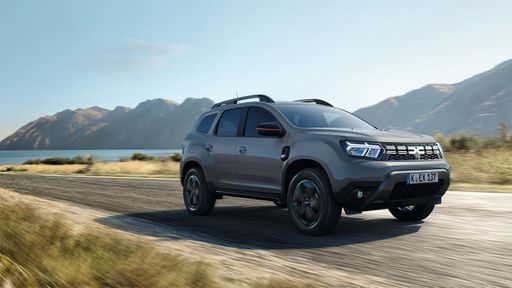
Dacia Duster
Dacia Duster
The Dacia Duster represents a compelling choice for those seeking an affordable yet robust SUV in the market. With its rugged design and practicality, it tackles both urban commutes and off-road adventures with ease. Inside, the vehicle offers a spacious cabin that ensures comfort, while maintaining its reputation for delivering excellent value for money.
details @ dacia-presse.de
@ dacia-presse.de
 @ dacia-presse.de
@ dacia-presse.de
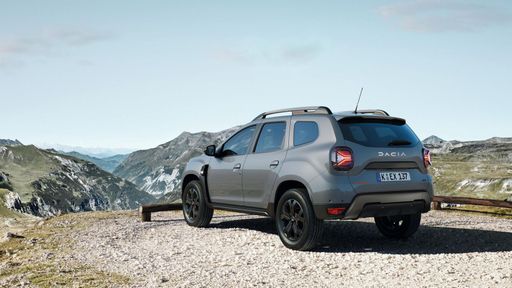 @ dacia-presse.de
@ dacia-presse.de
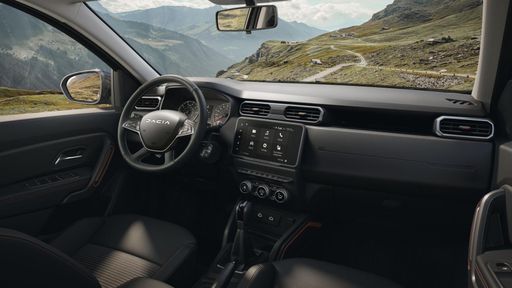 @ dacia-presse.de
@ dacia-presse.de
Hyundai i30 Wagon
The Hyundai i30 Wagon offers a blend of practicality and style, making it a popular choice for families and those in need of extra space. Its sleek exterior and comfortable interior provide a pleasant driving experience, while advanced safety features ensure peace of mind on the road. The i30 Wagon stands out with its impressive fuel efficiency and reliability, catering to both urban and rural lifestyles.
details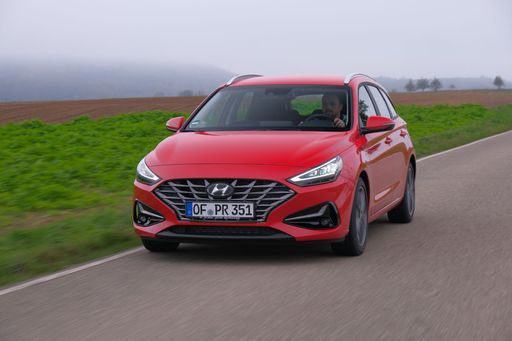 @ hyundai.news
@ hyundai.news
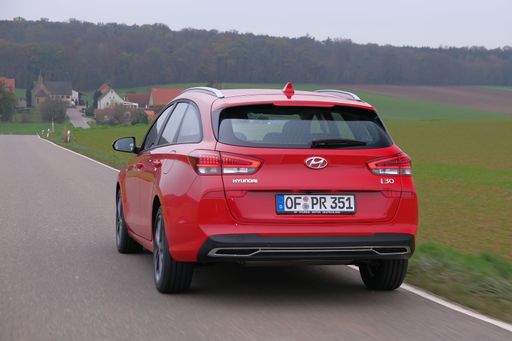 @ hyundai.news
@ hyundai.news
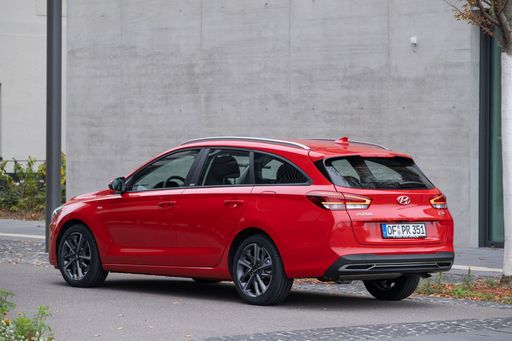 @ hyundai.news
@ hyundai.news
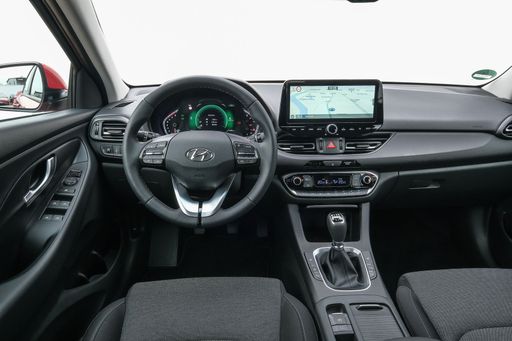 @ hyundai.news
@ hyundai.news
 @ hyundai.news
@ hyundai.news

|

|
|
|
|
Costs and Consumption |
|
|---|---|
|
Price
16300 - 24800 £
|
Price
24800 - 30100 £
|
|
Consumption L/100km
5 - 7.6 L
|
Consumption L/100km
5.7 - 6 L
|
|
Consumption kWh/100km
-
|
Consumption kWh/100km
-
|
|
Electric Range
-
|
Electric Range
-
|
|
Battery Capacity
0.60 kWh
|
Battery Capacity
-
|
|
co2
113 - 148 g/km
|
co2
130 - 136 g/km
|
|
Fuel tank capacity
49 - 55 L
|
Fuel tank capacity
50 L
|
Dimensions and Body |
|
|---|---|
|
Body Type
SUV
|
Body Type
Estate
|
|
Seats
5
|
Seats
5
|
|
Doors
5
|
Doors
5
|
|
Curb weight
1351 - 1465 kg
|
Curb weight
1316 - 1461 kg
|
|
Trunk capacity
430 - 517 L
|
Trunk capacity
602 L
|
|
Length
4343 mm
|
Length
4585 mm
|
|
Width
1813 mm
|
Width
1795 mm
|
|
Height
1656 - 1661 mm
|
Height
1475 mm
|
|
Max trunk capacity
1545 - 1609 L
|
Max trunk capacity
1650 L
|
|
Payload
414 - 430 kg
|
Payload
439 - 524 kg
|
Engine and Performance |
|
|---|---|
|
Engine Type
LPG, Full Hybrid, Petrol MHEV
|
Engine Type
Petrol, Petrol MHEV
|
|
Transmission
Manuel, Automatic
|
Transmission
Manuel, Automatic
|
|
Transmission Detail
Manual Gearbox, Automated Manual
|
Transmission Detail
Manual Gearbox, Dual-Clutch Automatic
|
|
Drive Type
Front-Wheel Drive, All-Wheel Drive
|
Drive Type
Front-Wheel Drive
|
|
Power HP
91 - 140 HP
|
Power HP
100 - 140 HP
|
|
Acceleration 0-100km/h
9.9 - 14 s
|
Acceleration 0-100km/h
9.8 - 13.3 s
|
|
Max Speed
160 - 180 km/h
|
Max Speed
178 - 197 km/h
|
|
Torque
160 - 230 Nm
|
Torque
172 - 253 Nm
|
|
Number of Cylinders
3 - 4
|
Number of Cylinders
3 - 4
|
|
Power kW
67 - 104 kW
|
Power kW
74 - 103 kW
|
|
Engine capacity
999 - 1598 cm3
|
Engine capacity
998 - 1482 cm3
|
General |
|
|---|---|
|
Model Year
2024 - 2025
|
Model Year
2024
|
|
CO2 Efficiency Class
D, C, E
|
CO2 Efficiency Class
D, E
|
|
Brand
Dacia
|
Brand
Hyundai
|
What drivetrain options does the Dacia Duster have?
The Dacia Duster is offered with Front-Wheel Drive or All-Wheel Drive.
The prices and data displayed are estimates based on German list prices and may vary by country. This information is not legally binding.
